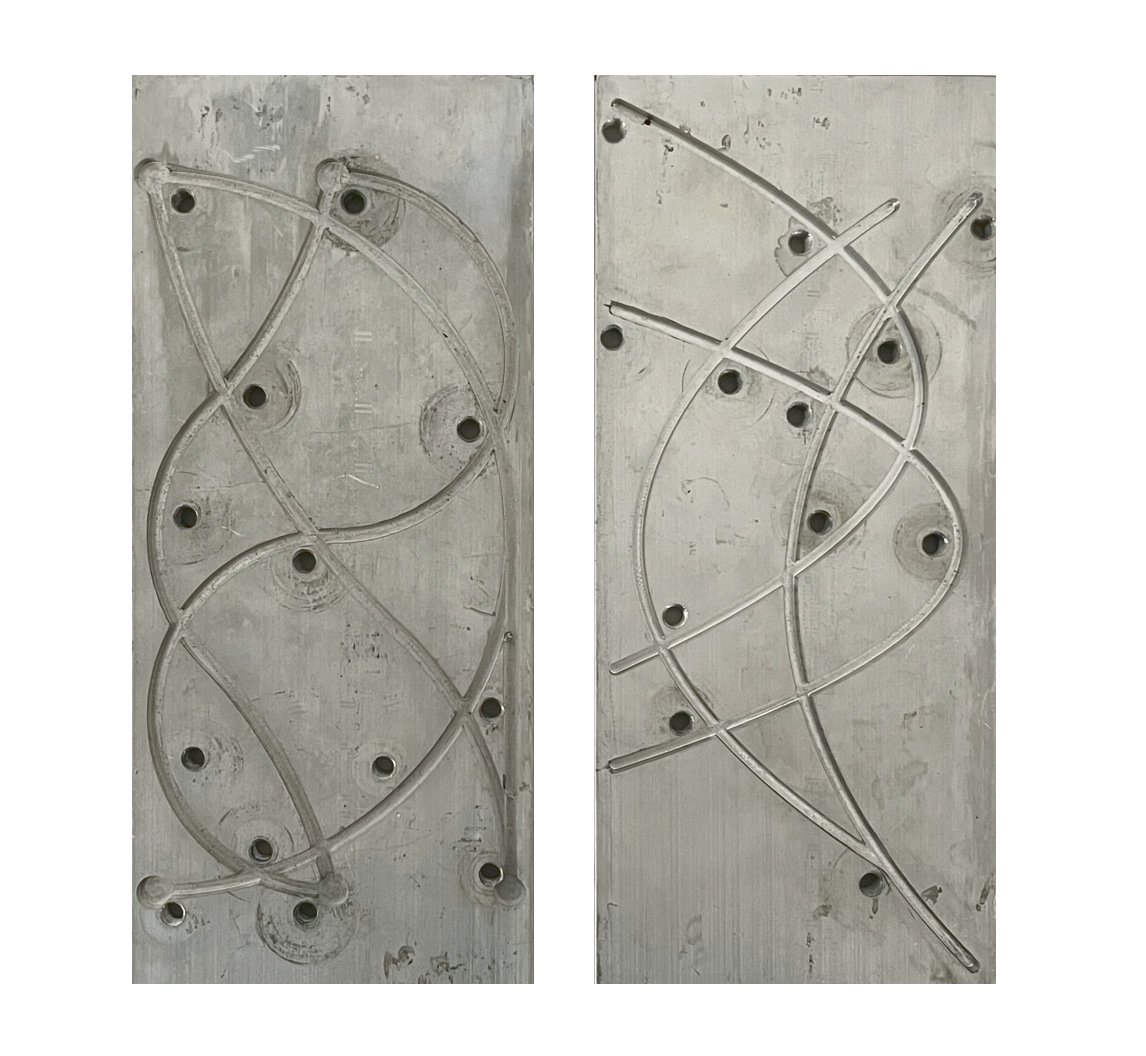Designed Impermanence
RISD Master of Industrial Design Thesis Show, 2024
Thesis excerpt: Impermanence is the only constant, regardless of pace; it is the sole throughline. Impermanence and temporalities are the only sure undercurrents. Rethinking how we design within these undulating folds and divergences is critical. Our very existence is predicated on the fact that we coexist within our surroundings and will leave a mark—however subtle. Systems have been extracted, manipulated, and exploited to the point where our environment is so imbalanced that natural cyclical turnovers and changes no longer occur, with communities and ecosystems unfairly facing the repercussions. We live in a different reality and need to prepare for anticipated futures. Incorporating changes within built forms will become increasingly necessary. I aim to challenge our expectations of time progression, not as sequential with deteriorating conditions, but by utilizing materials and passive indicators to create embedded flexibility and dynamism as structures exist over time.
Current drivers and unproductive loops
PROBLEM
We are not adapting quickly enough to rapid environmental shifts, risking disconnection from global implications when not directly impacted. It is imperative that we build environments with flexibility in both function and form. However, systemic change can only begin with a shift in our collective consciousness and awareness of how we are living with instability in the Anthropocene.
NEED
We need designed scenarios that promote greater sensitivity to environmental changes without inducing fear or paralysis. These scenarios should not be directly detrimental to the viewer. Objects within these environments should passively respond to heat, humidity, and time—factors that typically impact materials and structures negatively. Instead, these factors should be integrated into the design process as passive indicators.
Transformation of collective mindset and outputs after this shift
THEMES: Criteria in developing the work
MATERIAL CRAFT ECOLOGY
ADAPTIVE ALCHEMICAL CONSTRUCTIONS
REACTIONARY BEHAVIORAL ASSEMBLIES
EVOLVING RESPONSIVE SYSTEMS
GOAL
Create a space for contemplation that presents new constructional aesthetics. These aesthetics should celebrate transformation over time and encourage collaboration for alternative designed constructions.
METAL FACADE
TIME, HUMIDITY
ISSUE
Materials are misused due to improper maintenance, high turnover rate and disposal, destructive damage, and trends. These factors contribute to a culture of waste and undervaluation of material resources.
NEED
We need to maintain a material's value over its lifespan and create structural transformations that rely on time, interaction, and waste reduction. This approach challenges conventional notions of material deterioration, encouraging a more holistic lifecycle of built environments.
MATERIAL PHASES
The material undergoes three distinct phases:
PHASE 1: Flexible radial mobility
PHASE 2: Rusted stagnation
PHASE 3: Second phase of mobility, corroded drop
Each phase represents a unique state of transformation; metamorphizing and responding to material change.
SOLUTION
Rust and corrosion, typically seen as negative signs of "decay," are inevitable processes. Instead of being detrimental, they can be incorporated elements that create enduring value. This approach celebrates this progression and incorporates it into the aesthetic and functional aspects of the design.
NITINOL WIRE PANELS
TIME, HEAT
Progressive transformation of nitinol panels from left to right: 15C, 30C, 40C, 60C, and 80C
ISSUE
Global temperature increases may seem subtle but have drastic, devastating impacts. The signs of these impacts are often destructive. Over time, these subtle cumulative increases may cause us to lose collective memory and experiences of prior environmental conditions.
DEVELOPMENT
I needed a material that responded to temperature changes within a livable range, as most materials significantly morph only at unlivable conditions (as shown in the initial plastic prototypes). Nitinol wire, a shape memory metal, comes in varieties with different transition temperatures. Typically, when heated to its transition temperature, the wire straightens out from however it was manipulated in a cooler temperature configuration.
NEED
To make temperature-induced changes more apparent, I needed to minimize variables. As temperature increased, the initially straight woven panels needed to become increasingly complex over time.
SOLUTION
To better signal these changes, I assigned a specific profile curve to each transition temperature and "baked" in a new memory for the nitinol wire (secured in the jigs shown and heating the wire above 500C). By creating duplicates of the woven wire panels, viewers can easily witness these incremental shifts as temperatures change.
40C nitinol panel before and after heating, video montage
60C nitinol panel before and after heating, video montage
80C nitinol panel before and after heating, video montage
RESULTS
All temperature phases were displayed, allowing viewers to witness the changes without experiencing direct fear or detrimental impact. The installation provided a more immersive experience, enabling viewers to cross a post-human threshold, creating a space for contemplation of what we are leaving behind.
IMPACT GOALS
Encourage viewers to embrace new flexibility and more responsive, interconnected living states.
Utilize these concepts not only as signs of change but as prototypes for forms that could adapt and assist as temperatures rise.
Illustration, human to post-human
Install



















































